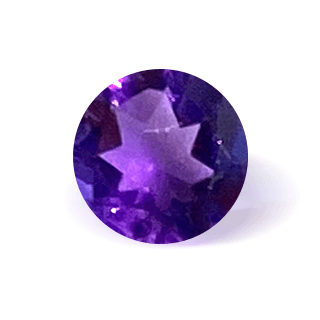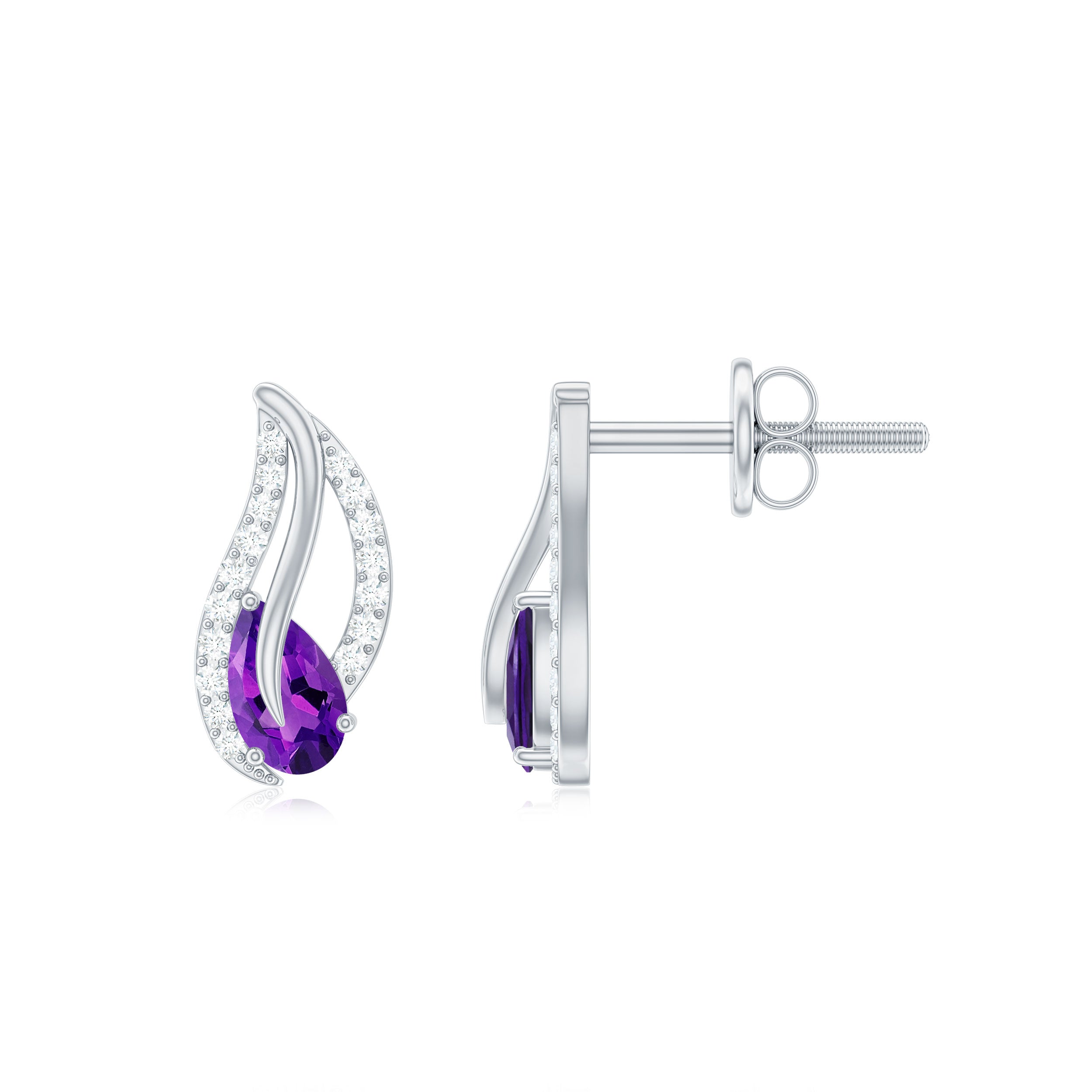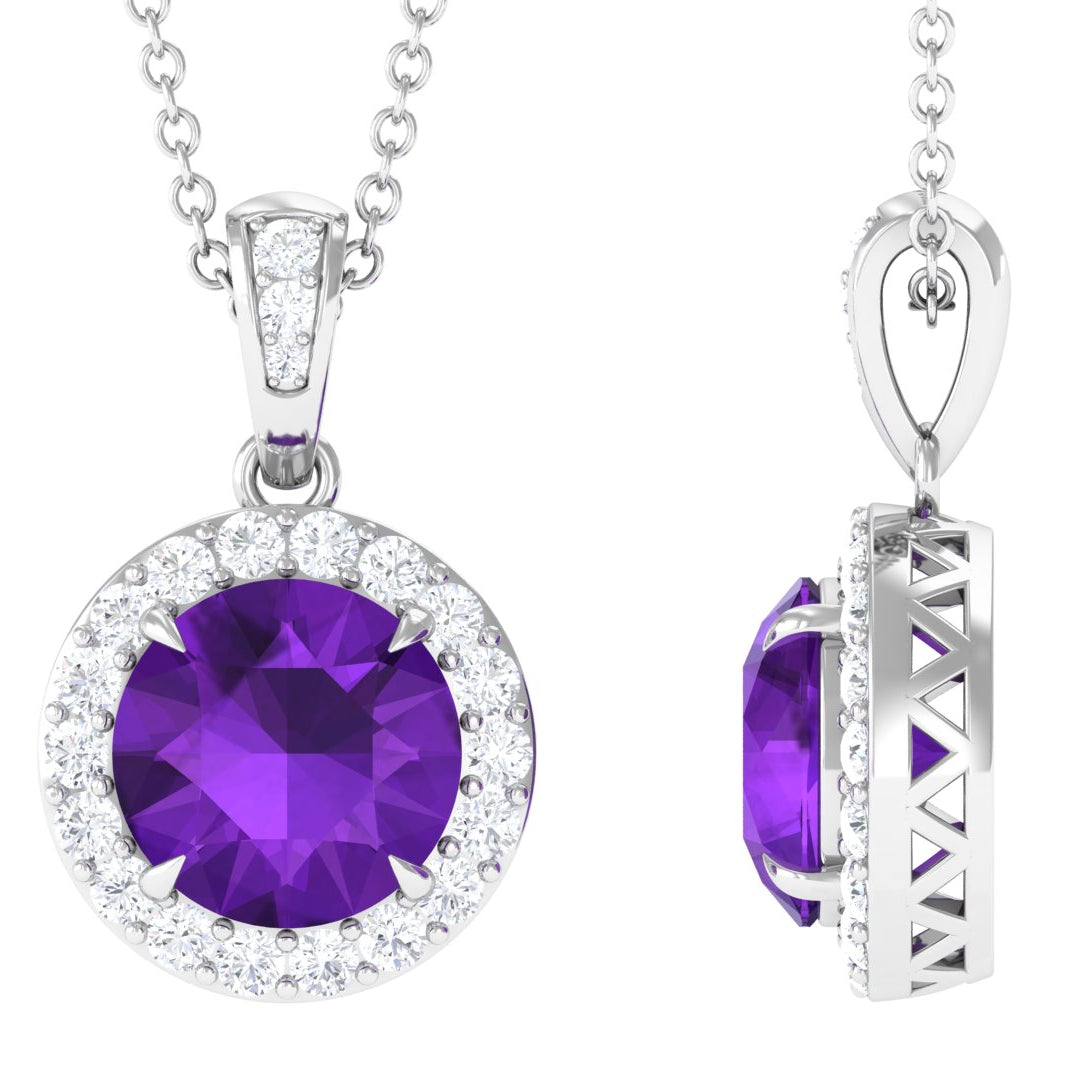All About Amethyst: Types, Colors, Description, Origins & Details
Amethyst: violet, radiant and royal! You could literally delve into the depths of this violet variety of Quartz with a mere glance. Yes, beauty that profound and without a shred of doubt, violet is the new cool today! Looking at the vibrant beauty of this semi-precious gemstone, don’t you get curious to explore the not so explored facts about this beautiful gemstone as well? Well, what are we here for? Our Amethyst education is the overall guide to get you well versed with the basic knowledge revolving around amethyst and the famous 4 C’s of this Birthstone of February to make a prudent decision while buying amethyst jewelry, taking you to a fun filled journey regarding its emergence and history as well. We all want our gemstone to have top notch quality after all, don’t we? Since long, amethysts have been a symbol of purity and spirituality and are famously known for their beautiful purple color. Therefore, buying an amethyst is an important personal, financial and emotional decision. Keeping this in mind, our expert team of gemologists is here to make it easier for you to make the right choice while choosing amethysts.
Properties of Amethyst
Hardness
You know how Amethyst is one of the most popular gemstones to be embedded in rings and necklaces? That’s because having a hardness rating of 7 out of 10 on Moh’s scale, it can certainly take the wear and tear of regular use with quite ease.
Colors
Free of any color zoning, Amethyst belonging to quartz family, is known to possess a vibrant purple color with milky white tone, just as unique as its name.
Sizes
There is no Amethyst crystal known to be taller than 30 cm. Interestingly, the largest Amethyst crystal was found in Uruguay known to be about 6.7 inches tall.
Origin & History
You know how engrossing Amethyst education gets when the formation of these elegant gemstones has some intriguing story attached to it? Well, the tale behind the formation of this February birthstone would certainly leave you wanting for more. History has it that the god of wine Dionysus, while being extremely drunk and drawn by love and lust for Amethyst, when resisted attempted to kill her, which let Diana to transform her to ‘white stone.’ Realizing his mistake, her grieved for hours behind her side and accidentally poured red wine mixed with tears on her, which led her to turn purple with milky white tone. Needless to say, the name Amethyst got its meaning ‘not intoxicated’ from that! From Saint Valentine donning a ring set made of Amethyst to Aeron donning a breastplate with Amethyst being one among the 12 precious stones, the craze for Amethyst has been there since time immemorial.
Where are Amethyst found?
Royal and high spirited appearance of Amethyst is something we’re all a fan of but haven’t you ever thought to yourself where is Amethyst actually mined? Well, the best quality Amethyst is known to be found in Sri Lanka, Brazil, Siberia, Uruguay with Zambia being the leading producer. Talking of its specific formation, it usually develops in ‘Basalts,’ volcanic igneous rocks that are known to sustain mineral along with water, leading to its purple white crystal like appearance. Apart from that, it is also known to be formed in igneous and metamorphic rocks. Now that’s some informative Amethyst education!
Natural versus Lab Created Amethyst

Natural Amethyst
A natural Amethyst, coming straight from the mines tends to have some inclusions and blemishes, which are generally heat treated. Apart from that, the formation of a natural Amethyst in volcanic igneous rocks takes more time. Since they’re naturally formed, they are also known to possess less less uniformity in color.

Lab Created Amethyst
A Lab created Amethyst, on the other hand possesses similar chemical and optical properties, just grown in lab by recreating similar environment. And of course, it takes lesser time to be formed. It also doesn’t need any kind of heat treatment since it is already more uniform in color and possesses lesser inclusions.
Amethyst Quality and Price Filters
Don’t you think quality of a gemstone that we use to embellish our jewelry with and further add to its vibrant shine and beauty is everything! Certainly, everything that we’re all looking for! But how do you judge that? Well, not as difficult as it may sound with our amethyst guide:
Color
Did you know the vibrant shade of purple color also varies in different kinds of Amethyst and is even graded accordingly? Yeah, if you look precisely, it does! Let’s give you an idea:
- Reddish Purple: Probably the highest graded quality of Amethyst. The Amethyst having lesser color zoning and a dark purplish-red is graded AAAA to AAA and is known to be highly valuable.
- Bronze Purple: Amethyst that possesses a lighter color with bronze tints is typically lesser in value than their reddish purple counterparts.
- Light Purple: Amethyst that is not so rich in purple color, i.e., is lighter or more pale in color, is graded between AA to A, making it less valuable.
Clarity
Like most of the gemstones found in the Earth’s crust, Amethysts are no different when it is said that clean and clear amethysts are rare to find. Clarity can directly determine the price of the Amethyst and as long as the inclusions are not detectable by the naked eye. From clarity graded between AAAA to A-B, it widely differs with different gemstones.
Carat
The weight of amethysts is measured in terms of Carat Weight usually shortened to Carat or Cts and is the measure of weight which should not be confused with the visible size of the amethyst which typically ranges between 0.01 to 2 CT in our collection. It must also be kept in mind that there are 5 CTs in 1 Gram.
Cut
The cut of an amethyst determines the overall color and brilliance of the gemstone. Therefore, any skilled cutter keeps in mind the overall shape, width, depth and faceting of an amethyst. The skills of the cutter contribute to the beautiful sparkle of the gem as much as the conditions which led to its formation. For the February Birthstone, there can be many cuts such as faceted, cabochons, beads, drops, carvings etc. In terms of price, cut stones occupy the position of costliest followed by cabochons and bead
Amethyst Grading Value
Want to judge the quality of your Alexandrite gemstone better? Simple! Get well versed with its grading system and see for yourself how you fluent you get in judging its quality. Let’s take a look:
AAAA-A-B
Thinking how to buy Amethyst? Well, if you look closely, you would find a difference in the color and clarity of Amethyst and on the basis of that, our Amethyst Education guide has classified and graded the different kinds of Amethyst:
AAAA
Here we come to the most sought after and top quality Amethyst. An Amethyst graded with AAAA possesses deep purple color along with eye clean clarity having a briliant cut.
AAA
The February birthstone belonging to this category possesses medium to dark purple color and tends to have slight inclusions, thus making it another south after gemstone.
AA
Amethyst graded with AA is medium to light in color and possesses some inclusions.
A-B
Paler category of Amethyst, having inclusions visible to the naked eye belong to this category.
Benefits of Amethyst
Amethyst, a powerful February birthstone, possessing no less powerful benefits. You see that’s what adds to the beauty and value of a gemstone. Symbolizing wisdom, balance and tranquility, an Amethyst is known to have pretty wholesome benefits including:
Physical Healing
The February birthstone Amethyst is known to enhance the immune system, make skin look more healthy, reducing hormonal unbalance and digestive problems.
Emotional Healing
Well, a glance at Amethyst would be enough to tell that it symbolizes serenity and living to that, it is known to help the wearer come out of depression, anxiety, fear, stress and emotional pain, thus bringing peace to his/her life. Purple is power after all!
Metaphysical Healing
Amethyst, having ties with Crown chakra, is known to keep the wearer away from negative energies and enhance their psychic powers. So much so that it is known to open a person’s third eye, thus blessing him with more wisdom, power and knowledge.
Frequently Asked Questions
How is an Amethyst formed?
Amethyst is a kind of quartz with chemical composition of silicon dioxide. They are formed in lava when gas bubbles get trapped and allowing crystal formation inside the cavities created by those bubbles. The purple quartz uniquely grows in huge geodes which are rocks filled with crystal gemstones. The gems in such geodes follow a six-sided pyramidal crystal structure.
What is difference between lab grown and natural Amethysts?
Like most of the gemstones, there is an option to choose between natural and lab-created Amethysts. One must not confuse “lab grown” with the “fake”. While synthetic is a replica the lab grown is developed in a controlled lab environment.
Notably, there are arise two major difference in both categories as lab grown amethysts tend to be uniformly colored and free of flaws.
Where do Amethysts come from?
Amethysts were first mined in Russia and later they were sited in Brazil, thereby increasing the supplies. Today, amethyst are mined almost in every part of the world like Africa to Asia to South America.
How to take care of Amethyst Jewelry?
Amethyst Jewelry is quite easy to clean due to their hardness and durability. However, a few things must be kept in mind like avoiding contact of the gemstone with make-up, harsh chemicals, abrasives.
While cleaning the jewelry make use of lukewarm water and mild cleaning detergent. Soft toothbrush can be used to clean the underside of the amethyst.
Also, the jewelry must be individually kept to avoid contact with other jewelry to avoid unnecessary scratches.
What is a Amethyst certification?
The most common Amethyst Certifications includes from GIA, SGL and HRD labs. It is usually a document you receive on the behalf of the aforementioned 3rd party labs which describes an amethyst in all of its characteristics.
Each and every party’s defining grounds may defer.
What god is associated with Amethyst?
This pretty purple gemstone has a popular folklore attached to it wherein it is believed to have gotten its color from the spilling of the tears and red wine of the Greek god of wine Dionysus.
How does Amethyst get its color?
Well, the stunning and vibrant purple color of Amethyst ranging from a deep purple to paler purple is due to the presence of aluminum and iron impurities. More these impurities, stronger the rich purple color!
Why is Amethyst so popular today?
The popularity of this February birthstone Amethyst is without any doubt because of its vibrant purple color which makes it one of the most alluring pieces out there. Apart from that, it has long been known to stimulate power and peace in the life of the wearer, which we bet you can tell from its rich purple color.
Conclusion
The most bewitching and royal February birthstone Amethyst, has that vibrant spark that makes it so irresistible to all, specially women. Purple is power, purple is royal! Basically this purple quartz gemstone is not ordinary! And since it has become so popular today, we thought why not serve you a good dose of Amethyst education, answering all your queries and making you well aware of the not so known facts surrounding it as well. Well, knowing our gemstone a little better would only help us in buying amethyst jewelry more efficiently, right? We tried to cover everything under our radar ranging from the meaning of this February birthstone, the value it holds because of its benefits, the famous 4 Cs of Amethyst to the most famous folklore surrounding its formation. We hope you had fun and we kept you intrigued till the end. We wish you all the luck in picking your favorite Amethyst jewelry.






